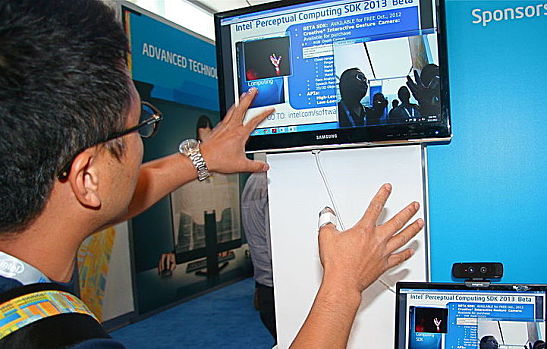Apple announced its purchase of 3-D sensor and detection company Primesense for $350 million on November 25, reports MarketWatch. So far, the mobile device giant has been quiet about what it plans to do with this latest acquisition, but rumors are already making the rounds.
A New Way to Play
According to a recent Forbes article, the next logical step for Apple is to reinvent its Apple TV “puck” and give it Kinect-like motion-detection capabilities, turning it into a television/gaming hybrid. At first, this seems like a losing proposition, since Apple TV doesn’t have the same kind of dedicated GPU or CPU technology as competitors like Microsoft or Sony. But it may not matter, since the Apple option would almost certainly sell for less than the $400 or $500 being charged for a Play Station 4 or Xbox One. What’s more, Apple’s iOS game ecosystem is built on family-friendly and cost-effective games.
The average Play Station 3 game still sells for almost $30, while a typical iOS game comes in at a measly 76 cents. It doesn’t stop there: with Airplay, iPhones and iPads can “take over” televisions, then use 3-D sensor technology to incorporated gesture-based gaming. In this scenario, Apple TV isn’t even a requirement, and the processors of new iPhones are more than up to the task. So, is this what Apple has in mind? TechCrunch notes that’s a possibility, though makes a good point—even though the size of sensors has been rapidly decreasing, they’d be a massive drain on battery life.
Thinking Outside the Box
MarketWatch speculates that Apple may have bigger goals than just taking a bite out of the console market. With Google Glass and other wearable technologies starting to make inroads, it’s possible the Primesense buyout is a way for the company to establish a firm foundation for next-generation voice and gesture devices. According to Paul Saffo of analytics firm Discern, “devices are getting too small to fit a keyboard and they are becoming too much a part of our lives for us to stop and touch them.” He believes gesture-based technology will become “foundational” and eventually replace even the ubiquitous desktop computer mouse.
Voice recognition has already sped through several generations with Apple’s Siri and now Google Glass, and while Kinect’s gesture detection is still hit-or-miss when detecting extremely complex or quick movements, progress is being made with each successive release. It makes sense, then, for Apple to try for a piece of this pie. Another option is a gesture-based iPhone, which would surely have consumers flocking to Apple’s upgrade program, or trading in their old devices for cash.
There’s no way to know if Apple will use its new 3-D sensor technology to make a console version of Apple TV, release a new iPhone, or take the wearable device route. However, by keeping mum on plans with Primesense, it’s a sure bet they already have something planned.
What do you think Apple will do with the 3-D sensor technology?
Image courtesy of Wikimedia Commons
[cf]skyword_tracking_tag[/cf]

